American Basic Science Club Inc. Analog Computer is a very basic machine designed to teach users how to use electronics in a basic form to preform complicated mathematics.
An advert (pictured) from “Boys’ Life” Nov 1962 p83 discribes the kit as:
“Electronically multiplies, divides, calculates powers, roots, logarithms.”
“The problem is set up on the scales of two linear potentiometers and the answer is found by listening for the null point on the third potentiometer.”
This kit cost $3.95 in 1962. This is $35 in 2020 (£27). In 1964 both Popular Mechanics and Boys’ Life were advertising the kit for $4.95. In 1968 Popular Science is still selling the kit for $4.95. Boys’ Life continued at this price as seen in a 1971 issue. In 1973 the kit was advertised at $5.95.
Jim Kerr has written about his father who created American Basic Science Club on this website. It discribes how the various kits were “advertised in Boys Life, Popular Electronics, Popular Science, other magazines and various comic books”. Jima lso explains how his father ran the company form 1957 until the early 80’s when people became much less interested in building things – and we thought it was just the kids of today!
According to this website, Ira J Perlow “Original Author of Phoenix BIOSes & PC motherboard designer”, bought one of these Analog Computers at his first computer.
| Year | 1962 |
| Make & Model | American Basic Science Club Inc. Analog Computer |
| Generation | Logic Trainer |
| CPU | Doesn’t use one |
| Speed | No clock |
| RAM & ROM | No storage medium |
| Power | 2x 1.5V D Cells |
| Exhibit No. | 1340 |

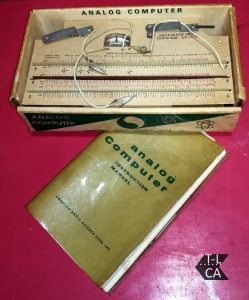
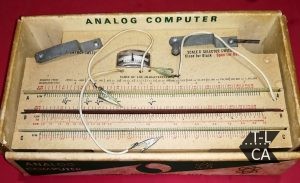
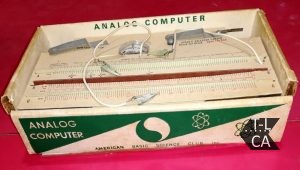
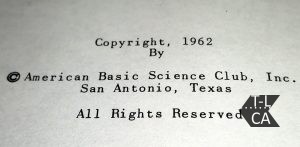
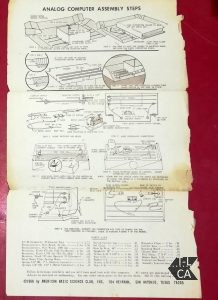
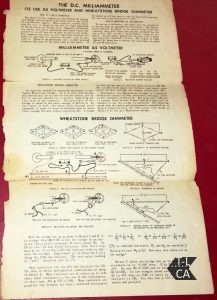

I recall having one of these as a kid, back in the mid 60’s. I didn’t buy it, I traded another kid for it and it was already assembled. I don’t recall getting headphones with it and didn’t get the instructions either. I calculated results by nulling the meter out. I didn’t know any better since I didn’t have a set of instructions at the time. As such, the precision of the calculations was pretty subjective, but it was an interesting toy and I had quite a bit of fun with it. It was a few years later when I reached high school that I began to grasp the principle of operation (once I started learning how to use a sliderule).